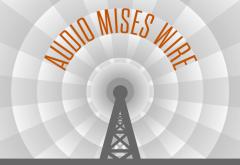 From the darkened cinema to the football field to the airport screening line, the US government inflated the actual threat of terrorism and the necessity of an aggressive military response.
From the darkened cinema to the football field to the airport screening line, the US government inflated the actual threat of terrorism and the necessity of an aggressive military response.
Original Article: “US Military Propaganda in Film, Sports, and TV: It’s Everywhere”
I was a young lad of thirteen when the first Transformers film directed by Michael Bay premiered in theaters. I do not recall much about it other than Megan Fox working on Shia Labeouf’s car, but apparently, this sultry façade was hiding a darker secret: the film was actually government-supported propaganda produced with extensive involvement from the military. This is just one of the many surprising and sometimes shocking things I learned from Christopher J. Coyne and Abigail R. Hall’s new book, Manufacturing Militarism: U.S. Government Propaganda in the War on Terror, which should be read by everyone who seeks to more fully understand the extent to which militaristic propaganda has pervaded seemingly every aspect of our society.
In this short book (clocking in at 187 pages not counting endnotes), Coyne and Hall offer readers a crash course in the history of militaristic propaganda, the techniques that are used to employ it, how it has been used historically in the United States, and an in-depth examination of how its domestic use has exploded since the advent of the war on terror.
Having been a small child when the Iraq War broke out, I found the chapters examining propaganda efforts before and after the invasion to be especially enlightening. Like many people my age, I was aware of the general outline of the Bush administration raising a ruckus over the fear of weapons of mass destruction but was not familiar with some of the more specific details that Coyne and Hall do an excellent job of not only cataloging but exposing as complete falsehoods that contradicted “known realities.”
Similarly, I was blissfully unaware of the full extent to which the “if you aren’t with us you’re against us” mentality had gripped the nation. I was of course familiar with David Frum’s disgusting attack on “Unpatriotic Conservatives,” but had not realized to what extent such hysteria had gripped the nation, in part because the government promoted it.
While the chapters dealing with Iraq were informative and likely bring specificity to broad ideas readers were already aware of, Coyne and Hall’s revelations of the extent of the Department of Defense’s collusion with Hollywood were truly mind-boggling. Did you know that the infamous Ku Klux Klan–supporting silent film Birth of a Nation was produced using the resources of the US military? I certainly didn’t, but apparently this involvement was a sign of things to come. Using films for propaganda continued through both World Wars, after which point the Department of Defense was created, and along with it the Motion Picture Production Office (MPPO) that has served as a liaison between Hollywood studios seeking to use military assets and the DOD. As the authors describe it, “In exchange for the DOD’s personnel and material, members of the film industry relinquish autonomy over their projects, making changes at the behest of Baruch [the longtime head of the MPPO] and his office.”
Notable films prior to the war on terror that received DOD assistance include 20,000 Leagues under the Sea and Indiana Jones and the Last Crusade. Even an episode of the TV show Lassie received DOD support, but only after the script was altered in a rather fundamental way so that no one in the military could be portrayed as having made a mistake in the show.
Coyne and Hall also point out some illustrative examples of films that applied for DOD assistance and were turned down. These include Apocalypse Now, The Deer Hunter, Platoon, and War Games, none of which are surprising, given their content.
In one section I found to be darkly humorous, the authors quoted the reasons the DOD gave when it rejected the script of Platoon: “There are numerous problem areas in the script. They include: the murder and rape of innocent Vietnamese villagers by US soldiers, the coldblooded murder of one US soldier by another, rampant drug use, the stereotyping of black soldiers and the portrayal of the majority of the soldiers as illiterate delinquents.” These were “unfair” and “inaccurate,” the army complained. Coyne and Hall demonstrate this is nonsense with a carpet bombing, as it were, of facts and statistics that demonstrate that, on the contrary, such examples were actually all too common and real during the Vietnam War.
However, it becomes clear that censoring Lassie is child’s play compared to the sheer scale of military involvement in film and television shows that occurred after 9–11. Between 2001 and 2017 the DOD was involved in the production of more than 130 films (helpfully listed in an appendix) and hundreds upon hundreds of TV shows, including Iron Chef, Ellen, Grey’s Anatomy, and Snoop Dogg’s Father Hood, among many others. Films include numerous Marvel movies, four Transformer films, Avatar, and Suicide Squad.
The chapter on DOD involvement in professional sports is equally disturbing, especially when the authors examine the case of former National Football League player Pat Tillman, who was used for propaganda purposes (despite his wishes) after he joined the army and was then killed by “friendly fire” and a cover-up of the circumstances of his death attempted. Similarly, the chapter on the Transportation Security Administration being pure security theater is chock-full of useful information.
As interesting as all of these examples are, and as important as the analysis of the role propaganda has played in ginning up support for the war on terror is, Coyne and Hall’s greatest contribution comes in their analysis of the political economy of government propaganda and their concluding chapter on what can be done about it.
While specifically tailored toward analyzing propaganda in the context of promoting militarism, their framework can easily be applied to many other areas. They astutely note that “the use of propaganda normalizes purposeful deceit by the state in domestic life and incentivizes similar behavior in matters outside foreign policy, further contributing to the expansion of state power relative to that possessed by citizens.” Any students looking for a senior thesis or term paper subject would likely find it a worthwhile enterprise to use Coyne and Hall’s framework to examine not only the use of government propaganda during the coronavirus pandemic but also how its use during the war on terror paved the way for its use now.
I wish I could say that Coyne and Hall’s conclusions give cause for optimism, but they do not. Their analysis of the structural roadblocks to counting on laws, the media, or whistleblowers to stand in the way of government propaganda is quite sound and we are left with the only realistic solution being citizens becoming inoculated against propaganda and reasserting self-governance. As with the rest of the book, Coyne and Hall’s analysis here is free from starry-eyed idealism about democratic self-government and they do not shy away from examining the difficulties that stand in the way.
Coyne and Hall point out that the use of propaganda leads to governing officials coming to view the citizens, from whom they theoretically derive their authority, not as people they are responsible to, but rather obstacles that must be poked, prodded, and manipulated into obedience. Soon this attitude leads to outright contempt for those citizens who stand in the way of whatever the latest scheme they have cooked up, whether it be invading Iraq, instituting lockdowns, imposing mask and vaccine mandates, or the outright confiscation of wealth. Things will likely get very ugly as the authorities increasingly let the mask slip and openly convey this contempt. As Coyne and Hall discussed in their previous work, the war on terror inevitably comes home. As the government ramps up its war on recalcitrant Americans that it labels domestic extremists or the unvaxxed, or whatever group falls out of favor next, this book will serve as an invaluable guide to those who wish to at least try to stand up for the truth. Let us hope that it will not be too late.
This Audio Mises Wire is generously sponsored by Christopher Condon. Narrated by Michael Stack.
Full story here Are you the author? Previous post See more for Next postTags: Featured,newsletter






















